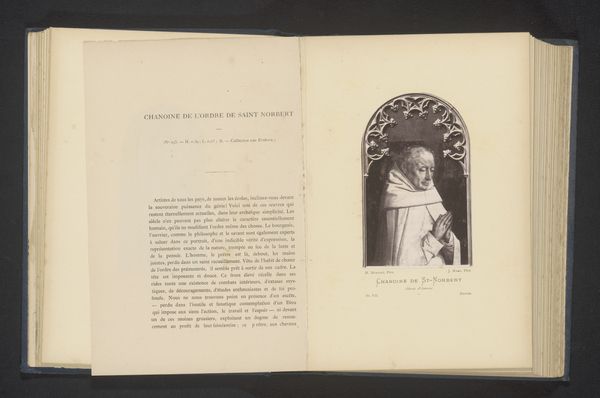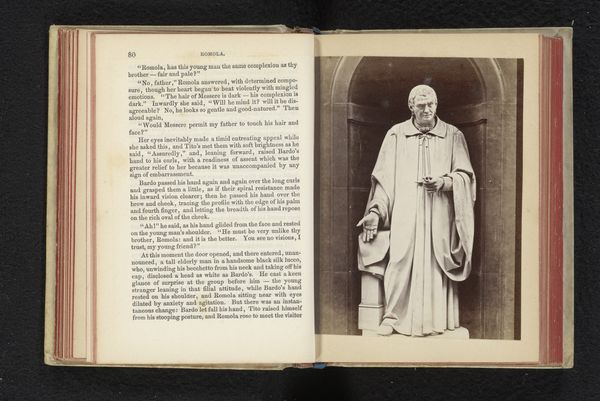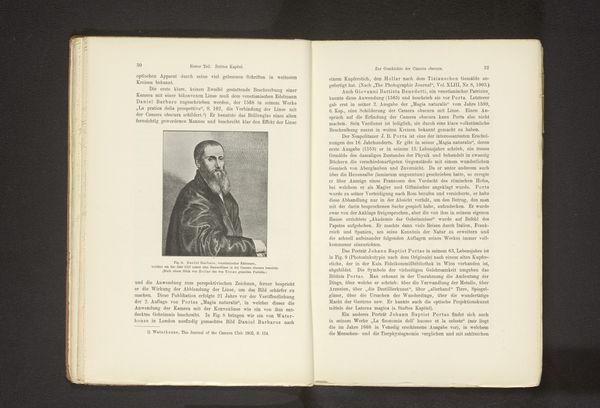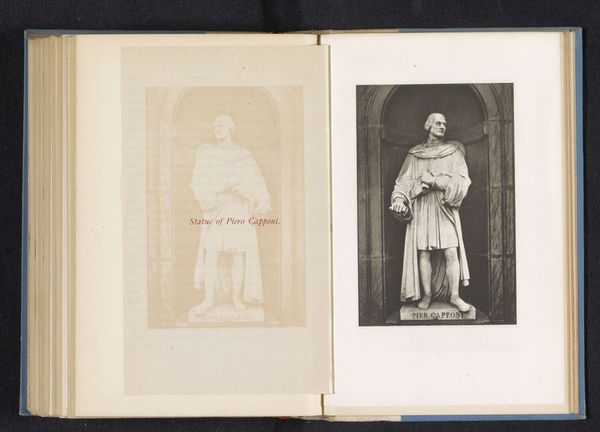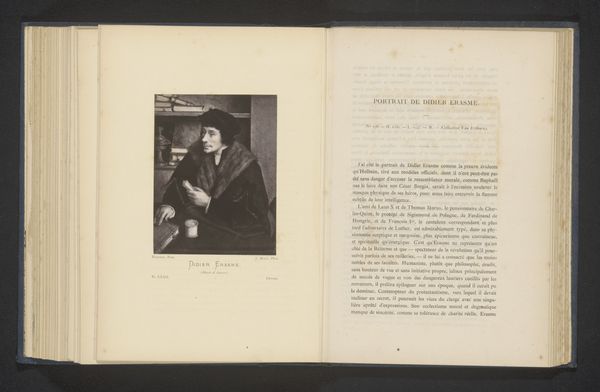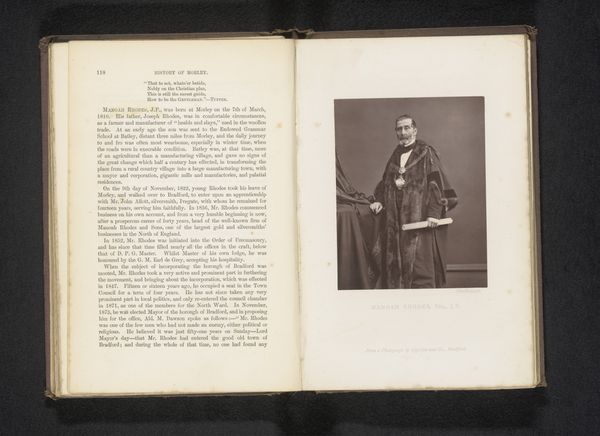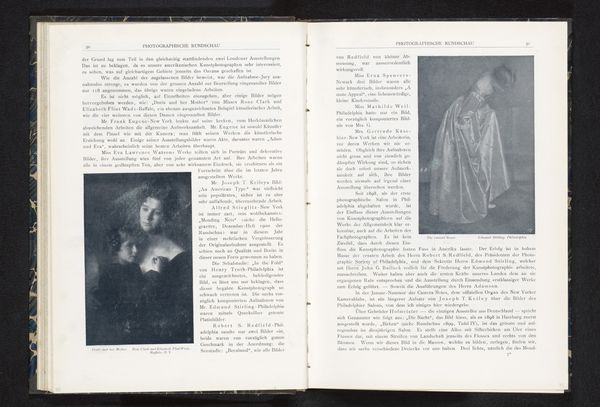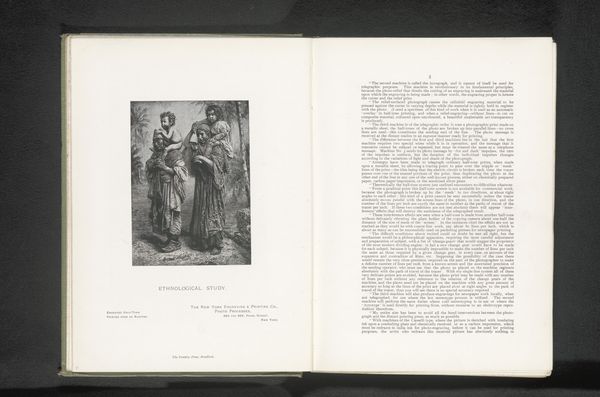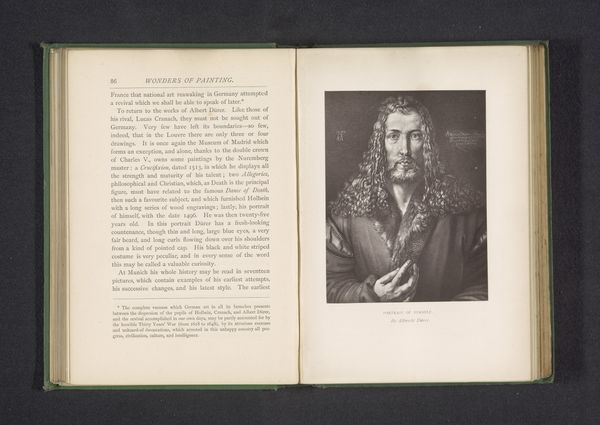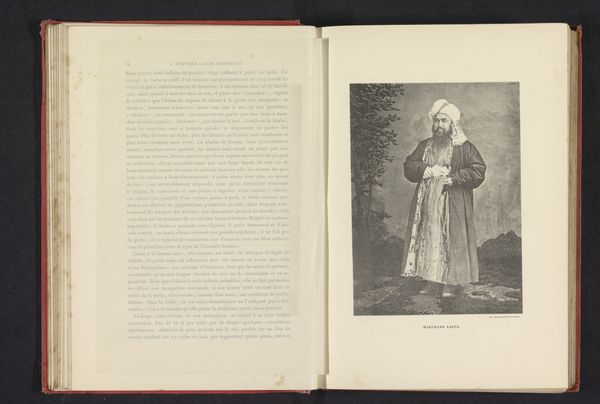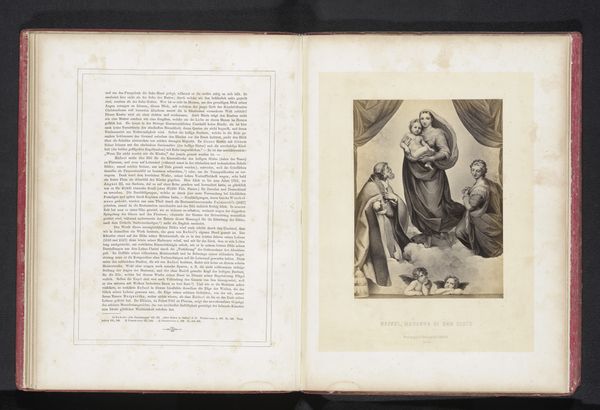
photography, gelatin-silver-print
#
still-life
#
photography
#
gelatin-silver-print
#
genre-painting
Dimensions: height 201 mm, width 150 mm
Copyright: Rijks Museum: Open Domain
Curator: Here we have a gelatin silver print entitled "Portret van een onbekende man met kraag", attributed to Rudolf Dührkoop and dating from before 1900. Editor: My first thought is of understated authority—the high collar, the dark coat, there’s a gravity here despite the soft light. It feels incredibly formal. Curator: Yes, Dührkoop was quite celebrated for his portraiture. The gelatin silver printing process allowed for a sharpness and tonal range which we can see at work here. Consider the textures achieved—the starched collar versus the smoothness of the face. He’s presenting this man as respectable and established. Editor: I can't help but see this through the lens of power and societal expectations. Look at that severe collar – almost a kind of constraint. We can read into the social construction of masculinity present in this era—the pressure on men to conform and the symbols of their status. This man, likely part of a privileged class, is being immortalized, a visual assertion of dominance within society. Curator: Photography, then, as a technology and Dührkoop's expertise, served to amplify such ideals. This printing method helped achieve detail, and allowed mass production. The portrait, therefore, became an accessible marker of aspiration and status. Photography played a role in mediating social representation. Editor: Absolutely. And it's vital we see beyond the aesthetic qualities to analyze its cultural work. This isn't just about an individual; it’s about solidifying a structure, a moment where representation, power, and societal roles were intertwined. Curator: Indeed. Appreciating how process and presentation connect gives us critical insights. Dührkoop didn’t simply capture a face; he participated in constructing an identity. Editor: By understanding the photograph's production, materiality, and historical implications, we can start questioning those seemingly solid identities, even now. Curator: That's the challenge; to see not only what is depicted but how its manufacture has shaped, even dictated, what we’re viewing today.
Comments
No comments
Be the first to comment and join the conversation on the ultimate creative platform.
